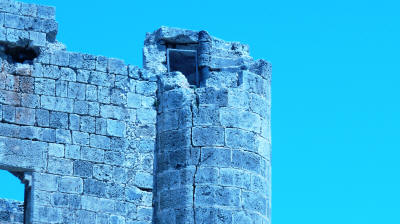Sinan Pasha Mosque (Church of Saints Peter and Paul)
Famagusta, North Cyprus
 |
| Sinan Pasha Mosque (Church of Saints Peter and Paul) |
As you head from the Land gate towards the Venetian Palace, you suddenly come across the magnificent flying buttresses of the Sinan Pasha Mosque.
It was built around 1360, supposedly with a third of the profits of a single trading venture of one of Famagusta's wealthiest businessmen, Simon Nostrano. it is one of the largest of the Gothic cathedrals in Famagusta, and is similar in design to St George of the Greeks, which was built around the same time.
Because of its massive height, the church walls had to be supported by flying buttresses, but perhaps shallow foundations, perhaps earthquakes meant that a further row of buttresses had to be constructed on the southern side in the 16th century, giving the church a unique appearance. Even now, if you look along the line of the wall, you can see it bowing outwards.
 |
| The Collapsed Minaret |
It is thought that the building became disused during the Venetian period, as it escaped the attention of the Ottoman bombardment of the city in 1571. After their conquest, the Ottomans took over the church as a mosque, naming it the Sinan Pasha Mosque. They added a minaret, to the south west corner, but that broke off centuries ago, and it now reaches no further than roof level. In fact, if you look at the minaret, it still shows signs of an imminent collapse.
During the British time, the mosque was used as a potato and grain store, leading to it being known locally as the "wheat mosque" (Bugday Cami). It was further used as a store for redundant council equipment. In 1934 it was a petrol store. By 1964 it had been converted into Famagusta's town hall and library. Records from 1968 has it as a cafe, bar and dance hall. It is currently closed pending renovation.
In the southern courtyard, underneath the second row of buttresses, you will find the grave of Yirmisekiz Celebi, who was a renowned diplomat, serving as the Ottoman ambassador to France, but died in exile in Cyprus in 1732.
See the location on Google maps.
Back to Famagusta index.